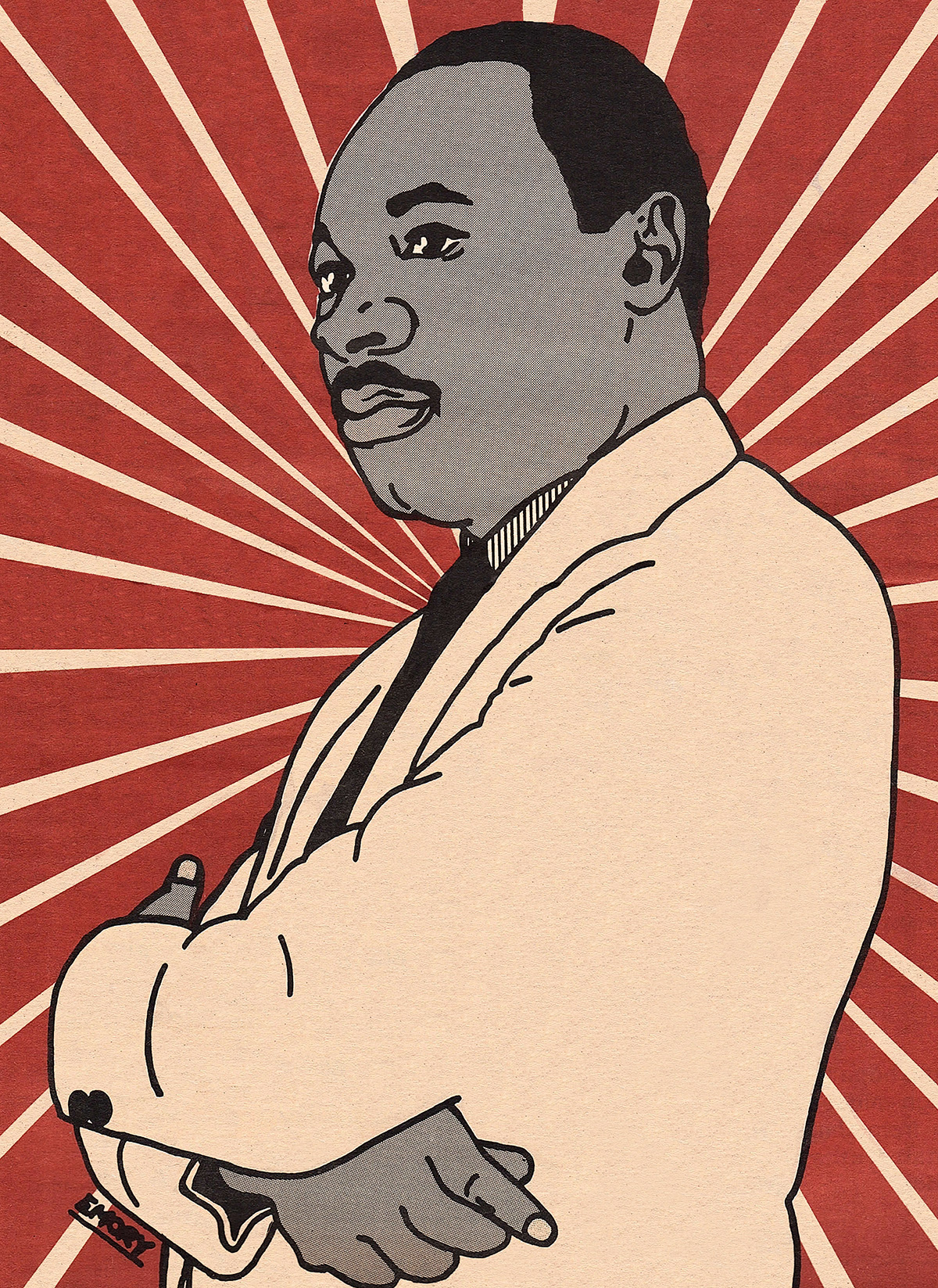IMPRINTED: ILLUSTRATING RACE
Norman Rockwell Museum
Stockbridge, MA
June 11, 2022 – October 30, 2022
Featuring work by Paul Scott, Garth Johnson, Elizabeth Alexander, and objects from the Ferrin Contemporary Collection.
Additional works & collections featured in the exhibition Our America/Whose America?
Online Symposium: September 23 – 24
Zoom Webinar: Sep 23, 7pm – 8:30pm
Presentation and Panels: Sep 24, 10am – 3pm
More details below.
ABOUT THE EXHIBITION
Imprinted: Illustrating Race examines the role of published images in shaping attitudes toward race and culture. Over 300 artworks and objects on view of widely circulated illustrated imagery will be on view, produced from the late eighteenth century to today, which have an impact on public perception about race in the United States. The exhibition will explore stereotypical racial representations that have been imprinted upon us through the mass publication of images. It culminates with the creative accomplishments of contemporary artists and publishers who have shifted the cultural narrative through the creation of positive, inclusive imagery emphasizing full agency and equity for all.
Co-curated by University of Delaware Professor of Visual Communications, and Interim Director of the MFA in Illustration Practice program at Maryland Institute College of Art (MICA), guest Curator Robyn Phillips Pendleton, who has written and spoken widely on the theme of this exhibition, and by noted scholar in American illustration, the Museum’s Deputy Director/Chief Curator Stephanie Haboush Plunkett. They are joined by a distinguished National Exhibition Advisory Committee of 10 academic scholars, curators, and artists with expertise related to the focus of the exhibition’s thesis.
MORE ON THE NORMAL ROCKWELL MUSEUM
The Norman Rockwell Museum illuminates the power of American illustration art to reflect and shape society, and advances the enduring values of kindness, respect, and social equity portrayed by Norman Rockwell.
Founded in 1969 with the help of Norman and Molly Rockwell, Norman Rockwell Museum is dedicated to the enjoyment and study of Rockwell’s work and his contributions to society, popular culture, and social commentary. The Museum, which is accredited by the American Association of Museums, is the most popular year-round cultural attraction in the Berkshires.
Having spent its first 24 years at the Old Corner House on Stockbridge’s Main Street, the Museum moved to its present location, a 36-acre site overlooking the Housatonic River Valley, in 1993. Internationally renowned architect Robert A. M. Stern designed the Museum gallery building.
One of the great charms of the Museum is its location. Many of Rockwell’s world-renowned images were drawn from the surrounding community and its residents. “The Norman Rockwell Museum in Stockbridge, Massachusetts, must be one of the most popular museums in the world,” wrote author Paul Johnson, “crammed from dawn till dusk with delighted visitors crowding round the originals of much-loved paintings. And one of the further pleasures of this enchanting place is that in the nearby little towns you can recognize among the locals the children and grandchildren of those whom Rockwell painted with dedicated veracity.”
EXHIBITION CATALOG
The Imprinted: Illustrating Race catalog is available for purchase through the Norman Rockwell Museum Store
Exhibition catalogue featuring essays by noted scholars and curators and designed by Hollis King
Imprinted: Illustrating Race Exhibition Catalog by Robyn Phillips-Pendleton and Stephanie Haboush Plunkett. Illustration has been at the forefront of defining events in the United States from the Civil War and Reconstruction Era to the Harlem Renaissance and the Civil Rights Movements of the 1960s and today. Imprinted: Illustrating Race examines the role of the published image in shaping attitudes towards race and culture over the course of more than three centuries. This landmark volume accompanies the first comprehensive exhibition on the theme, tracing prolific stereotypical representations of race circulated through mass publication, and highlighting the efforts of twentieth- and twenty-first century artists who have worked intentionally to shift the cultural narrative, emphasizing full agency and equity for all.
PROGRAMMING
ONLINE SYMPOSIUM: Illustration and Race: Rethinking the History of Printed Images
September 23 – 24, 2022
Compelling conversations with illustrators, art directors, authors, and scholars will explore more than three hundred years of racial representation in published art and the role of mass-circulated imagery as a force in shaping public perception about people and groups of people. Presented in conjunction with Imprinted: Illustrating Race, the Museum’s current exhibition, this symposium will spark dialogue about the ways that art, advertising, and systems of publishing have helped to frame public opinion, and how the art of illustration has become a force for change today.
Join us for all or part of the symposium.
More information can be found here.
Welcome and Opening Program
September 23, 7:00 pm – 7:30 pm
Hidden in Plain Sight: Illustrated Ceramics and American Identity
September 23, 7:30 pm – 8:45 pm
Moderator: Leslie Ferrin
Panelists: Elizabeth Alexander, Jacqueline Bishop, Judy Chartrand, Niki Johnson, Paul Scott
Hidden in plain sight, illustrations on porcelain and ceramic ware have, throughout history, transformed functional objects into message-bearers for a wide range of political and propagandistic causes, whether exchanged by heads of state or acquired for use or display in domestic settings. Leslie Ferrin of Ferrin Contemporary will discuss the imagery, drawn from popular nineteenth century prints, that was reproduced on widely distributed ceramics portraying historical events, indigenous people, and notable explorers, inventors, and politicians through a white European lens. The panel will explore how these seemingly ordinary objects have helped to establish firmly held beliefs about American identity. Artists Elizabeth Alexander, Jacqueline Bishop, Judy Chartrand, Niki Johnson and Paul Scott will discuss their work in contemporary ceramics, which reject systems of racial oppression and invite reconsideration of the sanitized version of history that was presented for generations.
Symposium Presentation and Panels
September 24, 10:00 am – 3:00 pm















You must be logged in to post a comment.